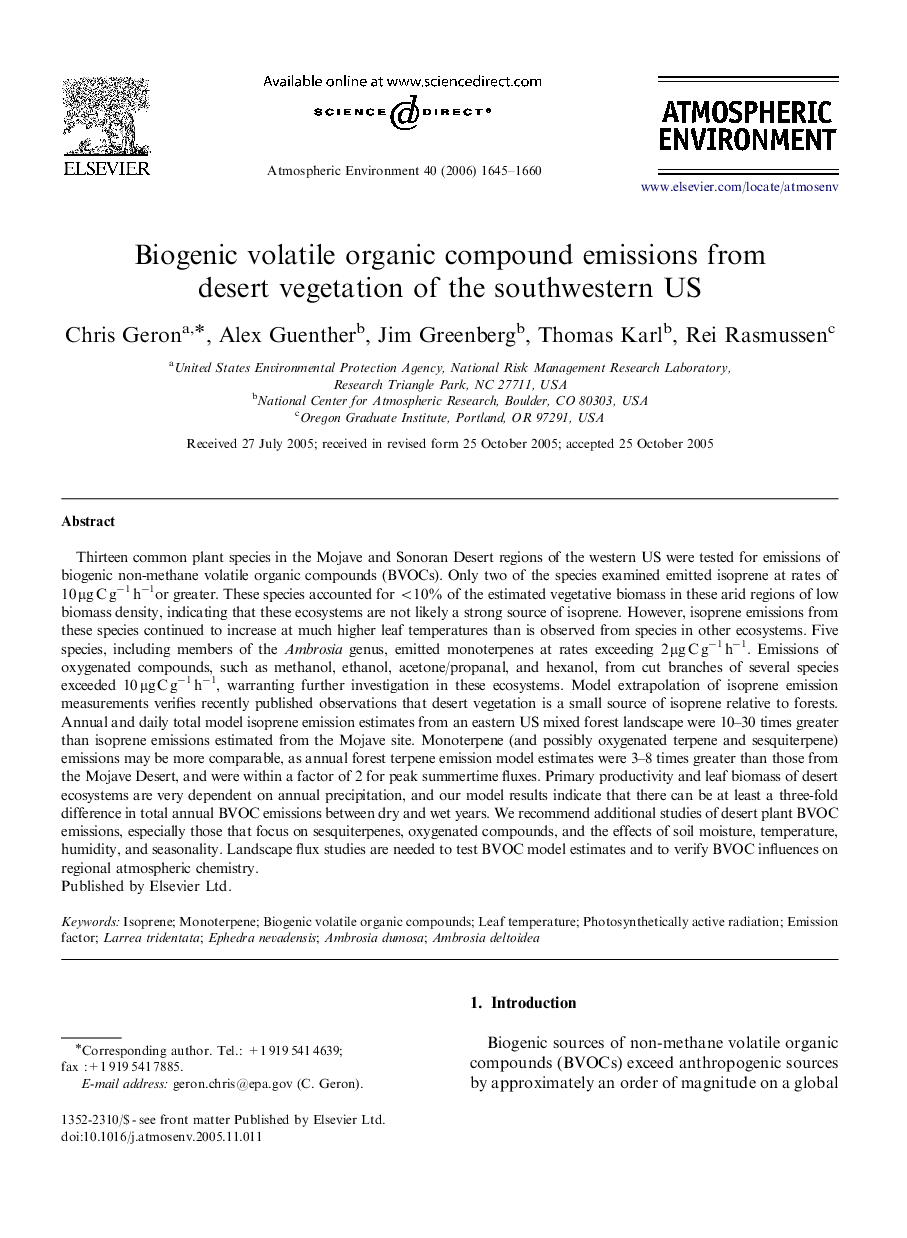| کد مقاله | کد نشریه | سال انتشار | مقاله انگلیسی | نسخه تمام متن |
|---|---|---|---|---|
| 4444568 | 1311245 | 2006 | 16 صفحه PDF | دانلود رایگان |

Thirteen common plant species in the Mojave and Sonoran Desert regions of the western US were tested for emissions of biogenic non-methane volatile organic compounds (BVOCs). Only two of the species examined emitted isoprene at rates of 10 μg C g−1 h−1or greater. These species accounted for <10% of the estimated vegetative biomass in these arid regions of low biomass density, indicating that these ecosystems are not likely a strong source of isoprene. However, isoprene emissions from these species continued to increase at much higher leaf temperatures than is observed from species in other ecosystems. Five species, including members of the Ambrosia genus, emitted monoterpenes at rates exceeding 2 μg C g−1 h−1. Emissions of oxygenated compounds, such as methanol, ethanol, acetone/propanal, and hexanol, from cut branches of several species exceeded 10 μg C g−1 h−1, warranting further investigation in these ecosystems. Model extrapolation of isoprene emission measurements verifies recently published observations that desert vegetation is a small source of isoprene relative to forests. Annual and daily total model isoprene emission estimates from an eastern US mixed forest landscape were 10–30 times greater than isoprene emissions estimated from the Mojave site. Monoterpene (and possibly oxygenated terpene and sesquiterpene) emissions may be more comparable, as annual forest terpene emission model estimates were 3–8 times greater than those from the Mojave Desert, and were within a factor of 2 for peak summertime fluxes. Primary productivity and leaf biomass of desert ecosystems are very dependent on annual precipitation, and our model results indicate that there can be at least a three-fold difference in total annual BVOC emissions between dry and wet years. We recommend additional studies of desert plant BVOC emissions, especially those that focus on sesquiterpenes, oxygenated compounds, and the effects of soil moisture, temperature, humidity, and seasonality. Landscape flux studies are needed to test BVOC model estimates and to verify BVOC influences on regional atmospheric chemistry.
Journal: Atmospheric Environment - Volume 40, Issue 9, March 2006, Pages 1645–1660